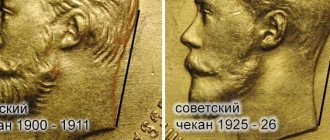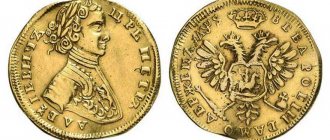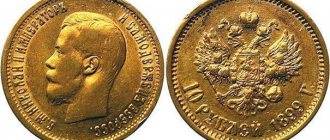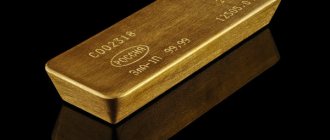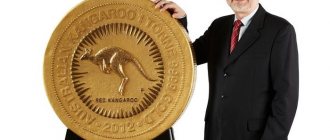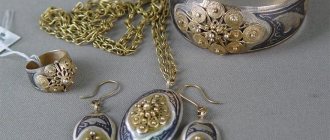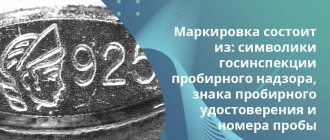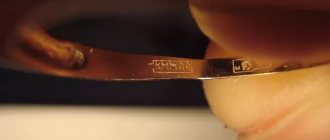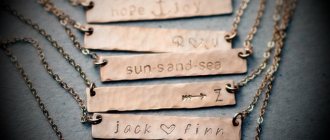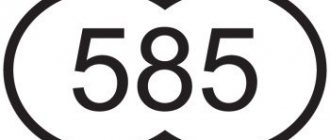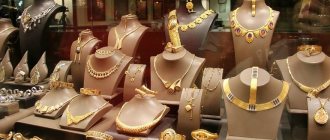Gold coins > Sell 10 rubles 1899 > Sell 10 rubles 1899 EB
The gold coin of Nicholas 2 10 rubles of 1899 has several varieties. One type of variety is the Mintzmeister sign, which is located on the edge of the coin. In this case, the letters EB are indicated, which corresponds to the Moscow Mint and mintmaster Elikum Babayants. This variety is as rare as FZ, but more expensive than AG, since it has very few fakes
Edge of a coin. Mintsmaster's badge EB
Elikum Babayants. Photo 1933. France. Emigration
History of the coin
This coin is inextricably linked with the person responsible for its minting. Elikum Babayants - mintzmeister of the St. Petersburg court, of Armenian origin. Born in St. Petersburg in 1867.
He graduated from the then prestigious Mining Institute. After which his parents gave him a job as a junior assistant janitor at the mint. There he worked all his life and rose to the position of Head of the Mint in 1916, but did not work for long.
In 1918 he went into exile.
Elikum had its own sign on coins, which wrote it into history. Did experiments with metals. Under his leadership, the first nickel test coins were issued, which are considered very rare among collectors
The table below shows the prices of coins in different states. You can see that the prices do not differ much
Price table for 10 rubles 1899 EB Chervonets
| Photo | Denomination | Metal | Weight, g | Price, rub |
| 10 rubles 1899. EB Chervonets | gold | 8.6 | 35500 | |
| 10 rubles 1899. EB Chervonets | gold | 8.6 | 35500 | |
| 10 rubles 1899. EB Chervonets | gold | 8.6 | 35500 | |
| 10 rubles 1899. EB Chervonets | gold | 8.6 | 36500 | |
| 10 rubles 1899. EB Chervonets | gold | 8.6 | 35512 | |
| 10 rubles 1899. EB Chervonets | gold | 8.6 | 35320 | |
| 10 rubles 1899. EB Chervonets | gold | 8.6 | 35500 | |
| 10 rubles 1899. EB Chervonets | gold | 8.6 | 35240 | |
| 10 rubles 1899. EB Chervonets | gold | 8.6 | 35540 | |
| 10 rubles 1899. EB Chervonets | gold | 8.6 | 35320 | |
| 10 rubles 1899. EB Chervonets | gold | 8.6 | 35250 |
Coin characteristics
- Catalog numbers : Bitkin-6; Konros-8/4
- Metal : gold
- Metal sample: 900
- Weight : 8.6 g
- Weight of pure gold : 7.74 g
- Diameter : 22.5 mm.
- Obverse : in the middle is the coat of arms of the coin of the mint of Tsarist Russia. Below the coat of arms is the inscription 10 RUBLES 1899.
- Reverse : in the center there is a profile of the head of Nicholas 2, looking to the left. There are teeth along the edge
- Rib : mintmaster sign (E B)
Historical facts
- In Tsarist Russia, the coin was issued from 1898 to 1900 and had a small circulation. Later, during the time of the RSFSR, the government was forced to make duplicates of this coin on old stamps for industrialization
- The weight of the Nikolaev Chervonets is the gold standard from which subsequent generations were based. For example, Chervonets Sower was released with the same characteristics
- The coin has been counterfeited at all times: under the king and later, and today
- The letters are placed separately, usually separated by the dot “ E.” B ". These letters indicate the last name and first name of the person responsible for minting coins. In this case it is Elikum Babayants
Source: https://bank25.ru/10-rublej-1899-god-eb/
Appearance and Design
Development of stamps for the production of all gold coins, including for 10 rubles. 1899, studied by A. Vasyutinsky. With the exception of minor features, all gold banknotes were minted according to a single pattern.
Obverse
On the front side there is a profile portrait image of Emperor Nicholas II framed by the title. It is designed in the form of hemispherical inscriptions on the sides of the portrait.
Reverse
The reverse side of the gold 1899 issue is decorated with the emblem of the empire, made in the traditional manner: a double-headed eagle under the shadow of three crowns and a St. George ribbon, on the outstretched wings of which the heraldic symbols of the eight kingdoms controlled by the empire are engraved.
edge
As a protection against fraud, on the edge of 10 rubles of 1899 there is an inscription stamped: pure gold 1 spool 78.27 shares and mintsmaster initials (AG, EB, FZ).
Buying gold coins, selling royal gold coins at high prices
We offer profitable sales of gold coins from various eras with an honest preliminary assessment. They can be sold for 100-200% more than their weight in gold. The cost depends on the edition and era. Below is a catalog table listing the coins we are interested in.
Approximate prices
| 5 rubles 1817-1831 | up to 16,000 rub. |
| 7.5 rubles 1897 | from 18,000 rub. |
| 10 rubles 1897-1911 | from 26,000 rub. |
| 10 rubles 1886-1894 | from 46,000 rub. |
| 15 rubles 1897 | up to 50,000 rub. |
Experts from the exchange and numismatic market have described a list of banknotes that can be sold profitably. Royal pieces made of gold are in particular demand.
Coins of Tsarist Russia
Royal coins made of precious metals formed the basis of domestic coins. Previously, money was minted only from gold and silver. A little later, copper specimens appeared for small calculations.
Below is a complete list of the most popular royal gold coins with descriptions. We are engaged in buying copies of Tsarist Russia. Here you can sell gold coins from the reign of Nicholas II at a profit. We buy modern investment and foreign collectibles.
Nicholas II
During the last years of the Tsar's reign and at the very beginning of the formation of the USSR, many chervonets and heels were minted from gold with the image of Nicholas II. Due to an oversupply on the Russian market, their value dropped quite quickly and was close to gold prices. After some time, prices began to increase, and with them the interest of numismatists.
We offer to sell gold coins of Nicholas II at a profit. We work at the best prices in Moscow. When determining the cost, we take into account the appearance, condition, rarity and the presence of lamination or original packaging (proof).
5 rubles
7 rubles 50 kopecks
10 rubles (chervonets)
15 rubles
25 rubles (2 1/2 Imperial)
37 rubles 50 kopecks
Alexander 3
Copies of the Russian Empire, which were minted in gold at the St. Petersburg Mint during the reign of Alexander III. A total of three denominations were issued: 3, 5 and 10 rubles.
We are engaged in buying gold coins in Moscow, offering competitive prices. Benefits of cooperation:
- We buy at market value.
- We guarantee a quick assessment - 2-5 minutes.
- We always focus on existing demand.
Please note that damaged specimens lose their numismatic value and are worth slightly more than gold. Preliminary assessment by professionals is provided free of charge.
10 rubles
The ten-ruble denomination was issued in 1885 in accordance with the rules of the current system. From this moment on, the tradition of portrait specimens was resumed. The reverse still features the coat of arms of the Russian Empire.
Due to the large circulation, 10 rubles Nicholas 2 is the most common coin, which has a good premium to the value of the metal (in perfect condition).
Nikolay 1
The coins of the Russian Empire were divided into groups corresponding to their purpose. In addition to the national denominations, a five-ruble version (regular minting) and a commemorative coin were issued. Gold - 25 and 30 zlotys (for Poland).
Peter, Catherine, Elizabeth, Pavel, Alexander, etc.
Gold specimens dating back to the period of the Russian Empire date back to the coinage reform of Peter I. The first specimen was minted in 1701 at the Kadashevsky Mint.
History of coinage of the Russian Empire (years of coin issue):
- Peter the Great - 1701-1725;
- Catherine the First - 1726-1727;
- Peter the Second - 1727-1729;
- Anna Ioannovna - 1730-1739;
- Elizaveta Petrovna - 1755-1756;
- Peter the Third - 1762;
- Catherine the Second - 1762-1796;
- Paul the First - 1796-1797;
- Alexander the First - 1802-1826;
- Nicholas the First - 1826-1855;
- Alexander II - 1855-1881;
- Alexander the Third - 1886-1894;
- Nicholas II - 1895-1913
We are engaged in preliminary assessment, as well as the purchase of gold and silver coins in Moscow and throughout Russia. We work with numismatists who know the real value, based on the historical value and volume of the precious metal.
USSR gold coins
We are interested in precious coins from various eras, including those of the Soviet Union. We accept both investment and anniversary copies.
Sower (chervonetsy)
Gold chervonets minted in the USSR in 1923. In 1975-1982, the State Bank of the Soviet Union issued coins that preserved the appearance of the original samples. The cost may vary greatly depending on the year of manufacture.
Olympics 80 (100 rubles)
We buy copies dedicated to the 1980 Summer Olympics. They have a relief image of the Moscow Kremlin. Coins with a face value of 100 rubles contain half a troy ounce of gold.
Modern Russia
The coins have been issued by the Bank of the Russian Federation since 1992. The appearance was changed in 1998 after the currency reform. The 1992 copies were withdrawn from circulation in 1999.
St. George the Victorious (50 rubles)
Investment copy issued by the Central Bank of the Russian Federation since 2006. The denomination of the gold coin is 50 rubles. The total circulation is small. The quality of the copies is proof (improved packaging technology).
Zodiac signs
The Bank of Russia began issuing coins with images of zodiac signs in 2002 in silver and gold. Over 3 years, 6 series of 12 coins were presented. The quality of coinage is anz and proof.
Sochi 2014
The coin program is dedicated to the Winter Olympic and Paralympic Games, implemented by Sberbank, the Central Bank of Russia, Goznak and the Olympic organizing committee. The period of implementation is 2011-2014. The program includes the production of investment and commemorative coins made of silver, gold and copper-nickel alloy. The collection includes mascots “Polar Bear”, “Bunny”, “Leopard”.
History of appearance
Nicholas II ascended the throne when the country was not in the most favorable position. The previous Minister of Finance, Vyshnegradsky, contributed to the artificial increase in the exchange rate of the ruble, which can rightly be called financial fraud. As a result, the inflated money bubble began to deflate, and the national currency began to depreciate.
The financial system was in dire need of overhaul.
The new minister, Sergei Witte, proposed transferring the state to the gold standard, simultaneously bringing all current prices into line with the real value. The reform was carried out secretly, the royal ruble of gold “lost” by a third. At the same time, it was nominally possible to maintain the same prices, strengthen the exchange rate of the national currency and attract foreign capital to the country.
The production of gold money began. Paper notes, which the predecessor of Nicholas II sought to popularize, were freely and without restrictions exchanged for gold.
In 1899, the largest circulation of monetary units with a face value of 10 rubles was noted. from gold throughout the history of their existence.
Tsar's golden chervonets of Nicholas II - price, varieties and description
During the reign of the last Emperor of Russia, Nicholas II, gold coins were minted several times.
As a result, chervonets with different circulations came into circulation, which determined the final value of the surviving coins.
In this regard, it is important to distinguish between the royal 10-ruble coins, the cost of some types of which at numismatic auctions reaches several tens of thousands of dollars.
Golden Chervonets 1899 - main characteristics
At the same time, the decree of the emperor himself determined the need to reduce the weight of coins (from 12.9 to 8.6 grams). 900 standard gold was used in the production of coins.
Among the main characteristic features of the golden chervonets of Nicholas II we can mention:
- Thickness 1.7 mm, diameter 22.6 mm;
- On the obverse there is a portrait of Nicholas 2 in profile and two inscriptions in a circle “Nicholas II Emperor” and “Autocrat of All Russia”;
- On the reverse is the coat of arms of the Russian Empire (double-headed eagle) and an inscription indicating the denomination and year of issue.
In addition to the characteristics indicated above, on the edge of the coin there is the inscription: “1 spool 78.24 shares”, as well as the initials of the mintzmeister. Nowadays you can find banknotes marked AG, EB and FZ.
Due to the large circulation, the royal chervonets of 1899 were in wide circulation and were considered as the equivalent of paper money throughout the Russian Empire.
It is worth adding that all gold 10-ruble coins of the issue in question were minted by the St. Petersburg Mint.
The issue of gold Nikolaev chervonets was renewed several times between 1899 and 1911. This money was used in circulation until the provisional government came to power, although there were rumors that the stamps of the coin came to Kolchak after the revolution and the White Army issued them to finance its military needs.
Tsar's chervonets 1906 - properties and cost
In 1906, another coin was issued, which is also considered the “royal gold chervonets” of Nicholas times. However, the number of its copies, unlike the previous version, is only 10 pieces. In this regard, today these banknotes are considered a rare and extremely expensive numismatic artifact.
This coin differs from the specimen discussed above in only a few small details, namely:
- The reverse of the coin indicates the year of issue 1906;
- The abbreviation AR is indicated on the edge, since in the year of issue of this coin Alexander Redko was the mintmaster.
A small issue was carried out by the same St. Petersburg Mint. It is believed that this issue was a test one. However, it was not possible to continue the issue in 1906. New coins appeared only in 1909.
Currently, as part of numismatic auctions, the Tsar's chervonets of 1906 is traded at an initial price of 20,000-25,000 dollars per unit. It is known that in 2015, at the St. Petersburg auction, one such coin was sold for $200,000. This banknote is rightfully considered one of the most expensive coins of the times of the Russian Empire.
During the reign of Nicholas 2, gold chervonets were issued in 1895, 1898, 1901 and other years. However, their circulation was at least several million copies, as a result of which these coins are sold at a price equal to the actual value of the precious metal included in them. As a result, at auction their price ranges from 15,000 to 20,000 rubles.
Source: https://GoldInside.ru/monetyi/rubli/tsarskiy-zolotoy-chervonets-nikolaya-2.html
Coin characteristics
| Denomination | Ten rubles |
| Size | 2.25 cm |
| Material | Gold |
| Try | 900 |
| Circulation, pieces (AG, EB, FZ) | 27600013 |
| Date of issue | 1899 |
| Date of withdrawal/withdrawal | 1915 |
| Emission center and country of issue | Russian empire |
| Mint | SPB (St. Petersburg Mint) |
| Designation according to the Bitkin catalog | № 4; № 5; № 6 |
How much does a golden chervonets cost: Peter 1, Catherine 2, Nicholas 2 and other rulers
In the 20th century, chervonets were simple paper money, the denomination of which was equal to 10 rubles, dollars and hryvnia. The term “chervonets” itself came to us from the early times of the Russian State and it does not affect the denomination of coins.
The first coins in denominations of 10 rubles began to be issued in Soviet Russia and their appearance was practically no different from the royal chervonets issued by Nicholas 2. Now many are interested in how much a golden chervonets costs?
The first gold coins
The first gold coins, which were commonly called chervonets, came to us from Holland and Hungary. They were made from the purest gold with a red tint.
Then, when Ivan the Third came to power, his personal coins began to be issued, but at that time they were not recognized as money. But this royal gold chervonets was actively used as a prestigious breastplate award and table sign.
Although, already at that time, the coins of Ivan 3 had almost no differences from real gold money, because on one side there was a double-headed eagle, and on the other the sovereign. This trend was relevant before Peter 1 came to power, who later made gold chervonets money.
Coins of Peter 1
Peter the first introduced many reforms; he also managed to introduce a new type of money into monetary circulation, which had many similarities with Dutch ducats. This is explained by the fact that Peter 1 preferred to study with the Dutch, as a result of which he actively used his skills.
The price of a coin of Peter the Great may vary depending on the year of its issue and external condition. This is a rather rare item that is often sought after by collectors. The minimum cost is $10,000, and the maximum reaches several hundred thousand.
You may be interested in: Coins of Ukraine: valuable, rare and exclusive
As an example, consider the royal chervonets of 1706, where the letters were minted. At the moment it is presented only in a single copy in Vienna.
Although, some data suggests that several collectors have in their inventory the presented coin, the price of which reaches $300,000.
During the reign of Peter, a gold chervonets cost only 2.30 rubles. Issued in the period 1701-1716.
Golden royal chervonets price
The 10-ruble coins issued under Nicholas II are commonly called Tsar's chervonets. The last Russian Tsar ordered the minting of banknotes weighing 8.6 grams and 1.7 millimeters wide in 1898. The issue ended in 1911. Reports speak of millions of copies.
For example, in the last year 10,000,000 tens entered the market. This affects the price of coins, because they are not rare. However, there is an exception. Let's start with it.
Golden royal chervonets of 1906
Millions of copies were interrupted in 1906. During its 12 months, only 10 coins were minted. Of these, only one royal gold piece was found. The price even for a sample in poor condition is 500,000 rubles. If the banknote is perfectly preserved, they are ready to give 6,000,000 rubles for it.
However, there are those who are happy to pay, but there are no sellers. The only copy is kept in the Vienna Museum. According to rumors, Russian numismatists have 2 more coins. They are also in no hurry to part with their treasures.
The Tsar's tens of 1906 can be compared with the rubles of 2001. For coins issued only 14 years ago, they give 300,000 of those same rubles. So far, only 3 copies have been found.
Mysterious chervonets of 1911
Historians have different opinions about the circulation of chervonets. Some call the figure 11 million, others - only 50,000. The last number is taken from the official reports of the minting yard. The first bar is a real look at the number of coins in circulation.
It has been suggested that the imperial stamps went to the Bolsheviks during the revolution. They continued, unofficially, to produce dozens of them.
Nobody recognized the banknotes of the new state. Meanwhile, trade with foreign countries had to be carried out. They paid with royal money, minting the missing ones.
So, the decision was made to buy the royal gold chervonets. price is from 10,000 to 30,000 rubles. The cost depends on the condition of the coin. The lower bar is also given for modern Nikolaev tens. It has been established that someone is minting them to this day.
Several coins that have passed the examination are no more than 15-20 years old. Gemologists claim that the banknotes are not fakes and are made using original stamps. This means that they have been preserved, but where they are and by whom they are used is unknown.
Standard royal chervonets
For royal chervonets issued from 1898 to 1911, with the exception of 1906, they give from 14,000 to 50,000 rubles. The maximum requires the proff state. Coins of this type retain their minted, original shine; imperfections are invisible not only to the naked eye, but also under magnification. Not a single scratch, dent, or scuff.
You can ask for at least millions for the Nikolaev chervonets. But, given the abundance of numismatic sites that explain the nuances of the transaction even to non-professionals, it is almost impossible to find a simpleton.
Dependence of the price of royal chervonets on the cost of gold
The price of the yellow metal is an unstable value, regulated daily by the London and New York stock exchanges. Focusing on them, the Central Bank of Russia also sets the bar. Over the past year, people have started asking for 1,000 rubles more per gram of pure gold.
This is also due to the increased spread between Western currencies and the domestic ruble. On the world market, the cost of metal is calculated in dollars, euros and pounds sterling. Therefore, at the beginning of 2014, they paid about 9,000 rubles for a Nikolaev ten, now it’s already about 20,000.
Metal in chervonets of 900 standard. Financial exchanges set the price at the 999 mark, that is, pure gold. The weight of the royal coins is 8.6 grams, but the precious element in them is only 7.7 grams. The rest is copper. So, you pay for 7.7 grams, and not almost 9.
By the way, the chervonets signs are named precisely in honor of the ignoble admixture, or more precisely, its color. Copper is red and gives the same hue to the coin alloy. In Old Russian, scarlet paint was called niello. The Russians first associated it with Dutch ducats.
They came to Slavic lands in the 13th century. The coins were also made of copper. In their likeness, Ivan the 3rd later created the first domestic chervonets. True, they were not paid with them. Minting was carried out for the sake of award badges. Prominent boyars, diplomats and glorious commanders hung reddish coins on their chests.
How much are the royal gold chervonets worth?
Probably every adult resident of our country has at least once thought about starting to save for a rainy day. But in the current instability, it is difficult to choose a reliable area for investment.
Rubles are depreciating, the exchange rate of other currencies and precious metals is unstable and subject to fluctuations, housing is deteriorating. Many people invest in the purchase of antiques and old gold coins, in particular, rightly believing that they will only become more expensive over time.
Let's, for example, figure out how much the royal gold chervonets costs.
History of Nikolaev chervonets
Having barely ascended the throne in 1894, Nicholas 2 carried out some reforms. He adopted a new gold standard and ordered the minting of a new gold coin. It retained the same set of denominations, 900 fines of gold-copper alloy and the same metal consumption (a pound of pure gold was used to cast coins worth 317 rubles 35 kopecks).
The new money was widely used in the Russian Empire, was quoted abroad, and even the Bolsheviks, after coming to power, continued to use them for their intended purpose. The latter fact is associated with an explosive increase in the value of some Nikolaev gold coins on modern numismatic markets, but more on that later.
As a result of the monetary reform he adopted, the weight of gold ten-ruble notes was radically reduced, from 12.9 to 8.6 grams.
The country's economy in those days was developing rapidly and a lot of cash was required. Therefore, a great number of gold chervonets were stamped. Domestic mints could not cope; coinage was ordered from Europe and even Japan. The circulation of the 1907 edition alone is 11 million copies. In 1911, the production of these coins ceased.
And then we enter the realm of historical mysteries.
According to the catalog of coins of Nicholas 2, very few chervonets were issued in 1911, fifty thousand pieces.
But their actual number exceeds the declared one by several orders of magnitude even now, a century later, and in total there were 11 million copies.
Most likely, although there is no direct evidence of this, the Bolsheviks continued printing coins after the revolution. It is unknown where the stamps of the imperial mint went later. But it has been established that this gold coin is still minted to this day. Some of the chervonets that were brought for examination were no more than 10 years old.
How much a gold chervonets of a particular year of production costs, depending on its state of preservation, can be found in the table.
The cost of Nikolaev chervonets
Year of manufacturePrice in thousands of rubles
| VF | XF | AU | UNK | PROOF | |
| 1911 | 22 | 30 | 30 | 43 | 283 |
| 1910 | 32 | 79 | 121 | 210 | 640 |
| 1909 | — | 22 | 30 | 118 | 579 |
| 1906 | — | — | 300 | 600 | 5800 |
| 1904 | — | 35 | 41 | 58 | 574 |
| 1903 | 14 | 30 | 32 | 51 | 323 |
| 1902 | 16 | 28 | 30 | 47 | 392 |
| 1901 | 10 | 31 | 30 | 111 | 538 |
| 1900 | 15 | 26 | 32 | 35 | — |
| 1899 | 16 | 27 | 29 | 51 | — |
| 1898 | 17 | 29 | 31 | 62 | 408 |
Quote: The answer to the question of how much the royal gold chervonets cost depends primarily on their authenticity. Since there are 20 times more fakes than originals, the average price of this banknote on the market is close to the actual cost of the gold it contains and equals 30 thousand rubles.
Description
Nicholas's gold chervonets is a small coin, its diameter is 22.6 mm, and its weight is 8.6 grams. Each contains 7.74 g. 900 gold. On the obverse is a bust of Nicholas, framed by text, on the reverse is the small coat of arms of the Russian Empire, below it is the denomination and year of minting.
It was minted in large quantities, with the exception of 1906 and 1907.
The minting on the edge, or, as numismatists call it, the edge of the chervonets, can also tell a lot. As mentioned above, part of the circulation was produced abroad. One star on the edge of the coin means that this piece was minted in Paris, two – in Brussels.
The most expensive ten-ruble notes
People who do not understand numismatics often mistake other gold coins of the same denomination, minted in the same period, for the Nikolaev gold chervonets. They can actually cost hundreds of thousands of dollars apiece. But first things first:
- 10 Rusov. In the first years of the reign of the last Sovereign, Finance Minister Witte tried to radically change the name of the Russian currency. By analogy with the French francs, they chose the name “Rus”. However, this word is not on the coin; instead, there is the inscription “2/3 IMPERIAL” on the reverse. The edge is smooth. On the obverse is a portrait of Nicholas. Five sets were made per sample, but then this idea was abandoned. The cost of the kit averages 400 thousand dollars. But only two can come to market, having gone into personal collections. The other three are in museums. In the Russian Historical Museum, the Hermitage and the American Smithsonian Museum.
- 10 rubles 1906 The cost of a gold chervonets of 1906 is 100–200 thousand dollars. The reason is simple - only 10 of them were cast on the occasion of the anniversary of Nicholas's coronation. The richest collectors from all over the world compete at leading auctions for the right to own these coins, driving up prices to incredible heights.
- Imperials. Beginning numismatists often confuse them with ordinary Nikolaev chervonets, although these are completely different monetary units. You can distinguish it by the inscription “IMPERIAL” on the reverse, above the coat of arms. They were minted for 3 years in a row, from 1895 to 1897, with a total circulation of 375 pieces. Imperials were minted according to the “Alexander foot”; they weigh 12.9 grams. The cost of one copy ranges from 30 to 60 thousand rubles.
Degree of preservation
The question of how much the Nikolaev chervonets costs cannot be answered without mentioning the generally accepted gradations of preservation. A gold coin of the same denomination may cost $10,000, or it may cost 10 times more. Its price both at the world's leading auctions and in a numismatist's shop will be determined by how well it is preserved.
The global gradation of safety of rare and collectible coins is as follows:
- UNC. This is how the most intact, and therefore the most expensive, chervonets are designated. They have no visible damage or abrasions, and the design is clearly engraved. They may have been cleaned and polished by the previous owner, but patinated examples are more expensive.
- AU. These examples have barely noticeable wear (mostly the protruding parts have been smoothed out), but are still shiny.
- XF. The wear is visible to the naked eye. Small relief elements are already difficult to distinguish. There is no shine.
- VF. Minor potholes and notches are acceptable, protruding parts are smoothed. Overall safety must exceed 75%.
- VG. The copy looks worn. About half of the original coinage is visible to the naked eye.
How to profitably invest in chervonets?
Like any antique, coins from past centuries only increase in value over time. The dynamics of the exchange rate allows us to confidently say that it is possible to sell the gold coins of Nicholas 2 for much more than the price for which they were purchased.
Unlike world gold prices, which are subject to significant fluctuations, prices for Nikolaev chervonets are governed by other patterns.
At first glance, buying and selling Nikolaev chervonets, making money on it, is simple. This is partly true, but be prepared for what will be required of you:
- a large amount for the initial purchase of coins;
- good knowledge of numismatics and history of that era, as well as the ability to understand antiques.
It's not as scary as it seems at first. It is enough to read several books on these topics and consolidate what you read by communicating on specialized forums.
The authenticity of the Nikolaev chervonets must be confirmed by a special certificate. Feel free to request it from the seller.
Following a simple rule will also help you avoid deception: buy Nikolaev money only from sellers with a good reputation. To do this, it is useful to register on numismatic forums.
There are not many serious sellers; you will find information about possible problematic transactions there.
